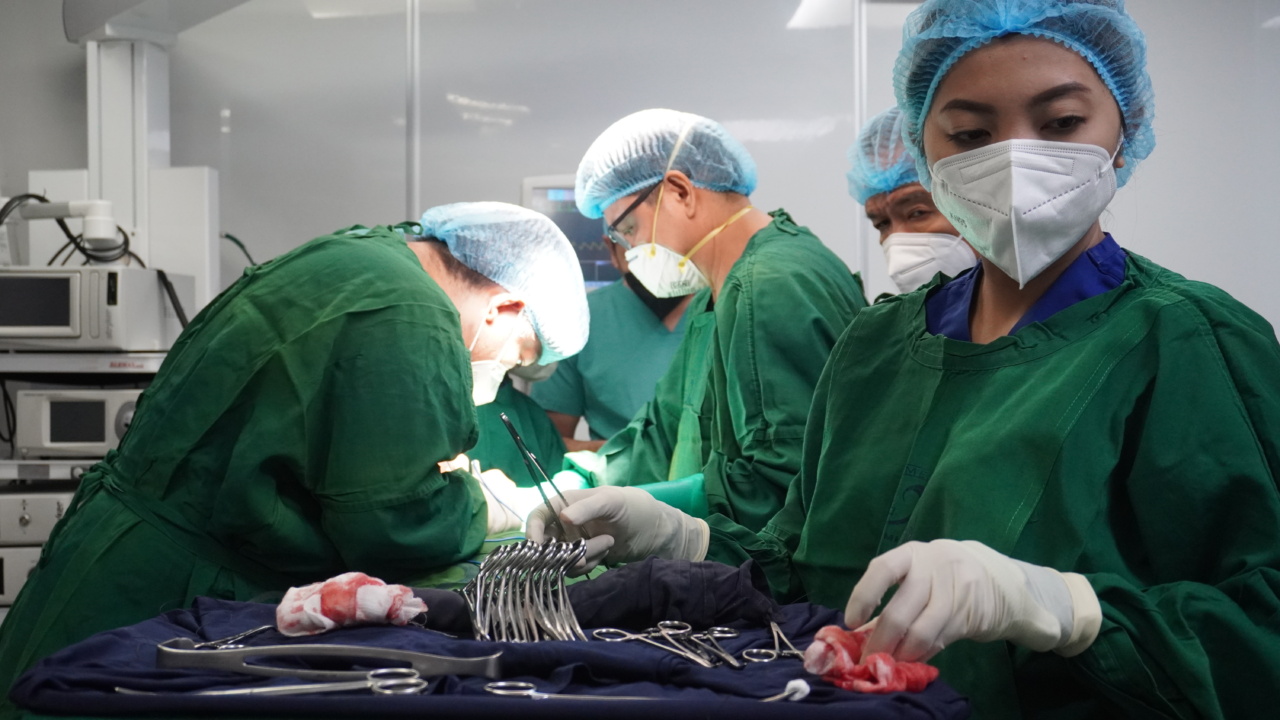Advancements in medical technology have revolutionized the field of surgery. Surgeons can now perform intricate procedures with minimal invasiveness, resulting in reduced risks, faster recovery times, and improved patient outcomes.
One such groundbreaking development is the emergence of “nano” surgery, a technique that allows surgeons to operate inside blood vessels with remarkable precision.
The Rise of Nano Surgery
Nano surgery, also known as endovascular surgery, involves the use of specialized tools and equipment to perform precise interventions within blood vessels.
It provides an alternative to conventional open surgery, where large incisions are made to access the affected area. With nano surgery, surgeons can navigate through the intricate network of blood vessels, reaching previously inaccessible regions without the need for major incisions.
The Role of Nanotechnology
Nanotechnology, which involves manipulating matter on an atomic and molecular scale, has played a crucial role in enabling nano surgery.
Surgeons utilize nanoscale tools such as microcatheters, guidewires, and microscopes to visualize and manipulate tissues and structures within blood vessels. These delicate instruments, often no more than a few millimeters in diameter, allow surgeons to perform precise maneuvers and deliver targeted treatments with minimal damage to surrounding tissues.
Applications of Nano Surgery
Nano surgery has wide-ranging applications across various medical specialties. One of the most significant areas of application is in the field of cardiovascular medicine.
Surgeons can now navigate through the intricate network of arteries and veins to treat conditions such as coronary artery disease, peripheral artery disease, and aortic aneurysms. By delivering therapies directly to the affected site, nano surgery minimizes the risks associated with systemic or whole-body drug administration.
Besides cardiovascular procedures, nano surgery is also used in neurology to treat conditions such as brain aneurysms and stroke.
By accessing the brain through blood vessels, surgeons can deliver treatments or remove blood clots with precision, reducing the risk of damage to healthy brain tissue. Additionally, nano surgery is gaining prominence in oncology, enabling targeted delivery of chemotherapy drugs and the removal of small tumors within blood vessels.
The Advantages of Nano Surgery
Nano surgery offers numerous advantages compared to traditional open surgery. One of the most significant benefits is the reduced invasiveness of the procedure.
As blood vessels allow access to various parts of the body, surgeons can reach critical areas without making large incisions. This minimizes scarring, reduces the risk of infection, and accelerates recovery times for patients.
Furthermore, nano surgery reduces the complications associated with general anesthesia, as the procedure can often be performed using local anesthesia.
This eliminates the risks associated with prolonged sedation and allows patients to remain awake and responsive during the surgery.
Another advantage of nano surgery is its ability to deliver targeted treatments. By accessing the affected site directly, surgeons can administer therapies precisely where they are needed, minimizing side effects on healthy tissues.
This targeted approach also enhances the effectiveness of treatments, leading to improved patient outcomes.
The Challenges of Nano Surgery
While nano surgery holds immense potential, it also presents several challenges that surgeons must overcome. One of the key obstacles is the complex navigation within blood vessels.
Due to the intricate network of vessels, surgeons must possess exceptional dexterity and hand-eye coordination to maneuver tiny instruments and reach the desired site. Advanced training and simulation technologies are crucial in developing these skills.
Another challenge lies in visualizing the surgical field. Blood vessels are often narrow and winding, making it difficult for surgeons to see and manipulate structures within them.
However, advancements in imaging techniques, such as high-resolution intravascular ultrasound and optical coherence tomography, have significantly improved visualization, enabling surgeons to perform complex interventions with confidence.
The Future of Nano Surgery
The field of nano surgery is rapidly evolving, and future advancements hold significant promise for further improving patient care.
Researchers are exploring the integration of robotics and artificial intelligence (AI) in nano surgery to enhance precision and accuracy. By combining the expertise of surgeons with the capabilities of robotic systems, procedures can be performed with even greater precision and efficiency.
In addition to robotics, nanotechnology is being harnessed to develop innovative drug delivery systems. Nanoparticles can be engineered to carry drugs and release them at the desired location within the blood vessels.
This targeted drug delivery approach can greatly enhance the efficacy of treatments while minimizing side effects.
Furthermore, ongoing research aims to expand the applications of nano surgery beyond blood vessels.
Scientists are exploring the potential of nanoscale tools to access and manipulate structures within organs such as the liver, kidney, and gastrointestinal tract. With these advancements, surgeons will be able to treat a broader range of conditions with greater precision.
Conclusion
Nano surgery represents a significant milestone in the field of surgery, enabling surgeons to perform intricate procedures within blood vessels with exceptional precision.
With the application of nanotechnology and the development of specialized instruments, surgeons can now deliver targeted treatments and navigate complex vascular networks. While challenges remain, ongoing advancements in robotics and nanotechnology hold immense promise for the future of nano surgery.




























